
The NGC 4038 Group is a group of galaxies in the constellations Corvus and Crater. The group may contain between 13 and 27 galaxies. The group's best known galaxies are the Antennae Galaxies, a well-known interacting pair of galaxies.
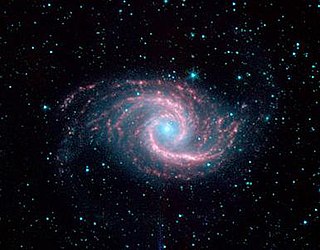
The Dorado Group is a loose concentration of galaxies containing both spirals and ellipticals. It is generally considered a 'galaxy group' but may approach the size of a 'galaxy cluster'. It lies primarily in the southern constellation Dorado and is one of the richest galaxy groups of the Southern Hemisphere. Gérard de Vaucouleurs was the first to identify it in 1975 as a large complex nebulae II in the Dorado region, designating it as G16.
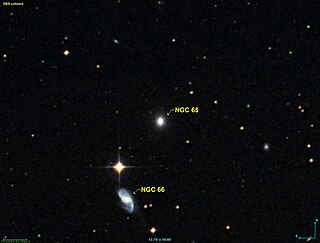
NGC 65 is a lenticular galaxy in the constellation Cetus. Its apparent magnitude is 13.4. It was first discovered in 1886, and is also known as PGC 1229.
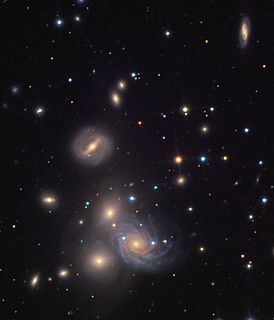
NGC 67 is an elliptical galaxy located in the constellation Andromeda that was discovered on October 7, 1855 by R. J. Mitchell, who described it as "extremely faint, very small, round". The galaxy belongs to the NGC 68 group, which also contains the galaxies NGC 68, NGC 69, NGC 70, NGC 71, NGC 72, and possibly NGC 74.

NGC 84 is a star in the Andromeda constellation. It was recorded on November 14, 1884 by Guillaume Bigourdan. It is situated close to the Celestial equator, making it at least partly visible in the sky, from both hemispheres in certain times of the year. It is usually mistaken with PGC 1384.

NGC 91 is a star with an apparent magnitude of 14.4 in the constellation of Andromeda. The star is southwest of the galaxy NGC 90. Discovered in 1866 by Herman Schultz, there have been many arguments if this star exists or not. However, people have observed the star, and have confirmed that NGC 91 exists.
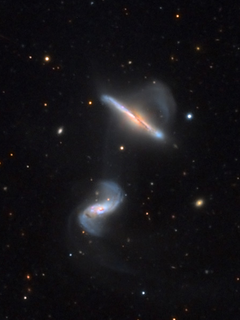
NGC 6285 is an interacting spiral galaxy located in the constellation Draco. It is classified as S0-a in the galaxy morphological classification scheme and was discovered by the American astronomer Lewis A. Swift in 1886. NGC 6285 is located at about 262 million light years away from Earth. NGC 6285 and NGC 6286 form a pair of interacting galaxies, with tidal distortions, categorized as Arp 293 in the Arp Atlas of Peculiar Galaxies
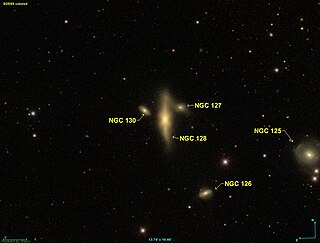
NGC 125 is a lenticular galaxy located in the constellation Pisces. It is designated as subclass Sa Ring in the galaxy morphological classification scheme. It lies approximately 235 million light-years away.
NGC 331 is a barred spiral galaxy in the constellation Cetus. It was discovered in 1886 by Francis Leavenworth. It was described by Dreyer as "extremely faint, very small, round, a little brighter middle, 12th magnitude star 3 arcmin northeast." There are two candidates as to which object is NGC 331: PGC 2759 or PGC 3406, with the former being a much more likely candidate than the latter.
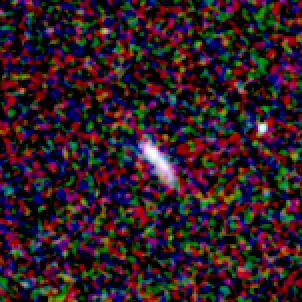
NGC 336 is a spiral galaxy in the constellation Cetus. It was discovered on October 31, 1885 by Francis Leavenworth. It was described by Dreyer as "very faint, small, round, suddenly brighter middle." It is also known as PGC 3470. Despite this, sometimes it is mistakenly identified as PGC 3526.

NGC 1573 is an elliptical galaxy in the constellation of Camelopardalis. It was discovered on 1 August 1883 by Wilhelm Tempel. It was described as "very faint, small" by John Louis Emil Dreyer, the compiler of the New General Catalogue. It is located about 190 million light-years away.
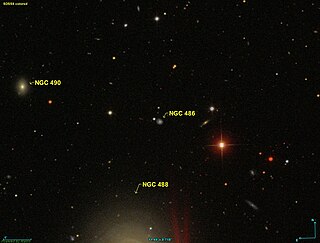
NGC 486, also occasionally referred to as LEDA 1281966 or GC 275, is a spiral galaxy in the constellation Pisces. NGC 486 was discovered on December 6, 1850 by Irish engineer Bindon Blood Stoney.

NGC 806 is a spiral galaxy approximately 166 million light-years away from Earth in the constellation Cetus. It was discovered by American astronomer Lewis A. Swift on November 1, 1886 with the 16" refractor at Warner Observatory.

NGC 512, also occasionally referred to as PGC 5132 or UGC 944, is a spiral galaxy in the constellation Andromeda. It is located approximately 217 million light-years from the Solar System and was discovered on 17 November 1827 by astronomer John Herschel.

NGC 6040 is a spiral galaxy located about 550 million light-years away in the constellation Hercules. NGC 6040 was discovered by astronomer Édouard Stephan on June 27, 1870. NGC 6040 is interacting with the lenticular galaxy PGC 56942. As a result of this interaction, NGC 6040's southern spiral arm has been warped in the direction toward PGC 56942. NGC 6040 and PGC 56942 are both members of the Hercules Cluster.

NGC 527, also occasionally referred to as PGC 5128 or PGC 5141, is a lenticular galaxy located approximately 259 million light-years from the Solar System in the constellation Sculptor. It was discovered on 1 September 1834 by astronomer John Herschel.
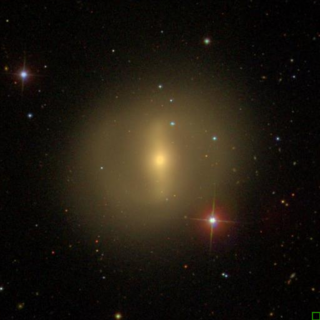
NGC 4665, also catalogued as NGC 4624 and NGC 4664, is a barred lenticular or spiral galaxy located in the constellation Virgo. It is located at a distance of circa 60 million light years from Earth, which, given its apparent dimensions, means that NGC 4665 is about 75,000 light years across. NGC 4665 lies 2 and 3/4 degrees east-south east of Delta Virginis and 50 arcminutes southwest of 35 Virginis. It can be viewed through a telescope at a 23 magnification, forming a pair with an 11th magnitude star 1.5 arcminutes southwest. It is part of the Herschel 400 Catalogue.

NGC 765 is an intermediate spiral galaxy located in the constellation Aries. It is located at a distance of circa 220 million light years from Earth, which, given its apparent dimensions, means that NGC 765 is about 195,000 light years across. It was discovered by Albert Marth on October 8, 1864. The galaxy has an extensive hydrogen (HI) disk with low surface brightness, whose diameter is estimated to be 240 kpc.

NGC 1142 is a distorted spiral galaxy in the constellation of Cetus. It is located about 370 million light years away from Earth, which means, given its apparent dimensions, that NGC 1142 is approximately 170,000 light years across. It is a type 2 Seyfert galaxy. It interacts with the elliptical galaxy NGC 1141.
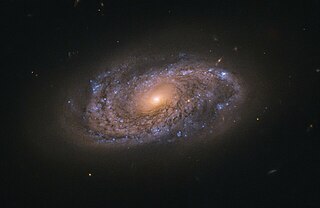
NGC 2906 is a spiral galaxy located in the constellation Leo. It is located at a distance of circa 120 million light years from Earth, which, given its apparent dimensions, means that NGC 2906 is about 75,000 light years across. It was discovered by William Herschel on December 28, 1785.




















